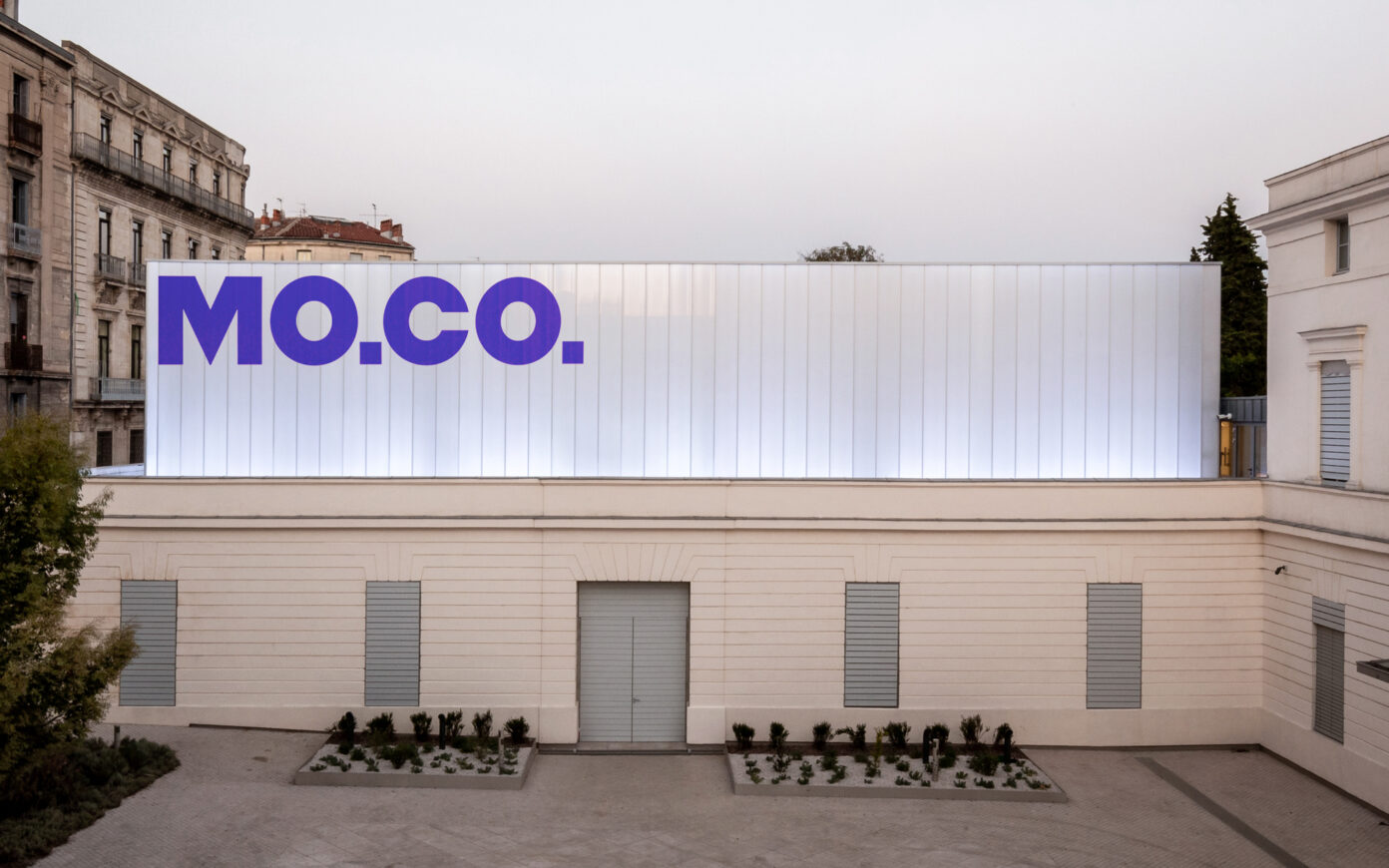"Pièce Lumineuse" is both a piece of architecture and a work of art. It was developed for the Center for Contemporary Creation in Tours and the Palais de Tokyo by PCA-STREAM and Orlan, a pioneering artist and theoretician of “Carnal Art.” This work explores the sensual and experimental dimension of Orlan’s oeuvre, while at the same time illustrating the rich exchanges and artistic collaborations that PCA-STREAM promotes in order to bring some degree of “otherness” to its design work.

A theoretical reflection
In 2003, Alain Julien-Laferrière, director of the CCC, invited Philippe Chiambaretta to think about a possible architectural intervention on the façade of the Center for Contemporary Creation of Tours, which dates back from the 1980s and is, as such, one of the earliest art centers to have been set up in France. The CCC occupied spaces that were unsuitable for the activity and the prestige of an institution that organizes monographic exhibitions of international artists. There was also a problem of identity and visibility, due to its former façade as a garage at the foot of a 1960s building. The theoretical reflection focused on the mode of architectural expression of an art center in an urban context. This request converges with key concerns of PCA-STREAM regarding the communication function of architecture and its potential instrumentalization in the light of the new links between culture and the economy, which form the central theme of Stream 01. Exploration.
An experimental process
In response to the artistic experimentation that was produced by the CCC, PCA-STREAM developed, through many discussions with Alain Julien-Laferrière, an experimental approach over several years. In 2003, the first scale model was designed; it was presented to the public in an interactive exhibition called Game Over Architecture in 2004. In 2006, the façade project was designed and completed, before being inaugurated in 2007. « Game Over Architecture », which was designed in 2004 for the CCC’s Project Room, emphasized the playful interactivity between the viewer and an installation operating as a video game. Through a device of visual and aural mixing, the visitor was offered the possibility to explore the codes of architecture on a human scale, by combining and deforming them using play mats controllers. By wandering in the room, the visitor influenced the projected visual compositions, and was invited to compose their own architecture—in other words, to take part in a dynamic creation. The exhibition acted as a laboratory of the façade to come. The final form ultimately proceeded from the process, in a project in which, in Marie-Ange Brayer’s words, “the processual dimension prevails over the inanimate object, thus opening itself to the frozen object, opening itself to ‘actants’.”
An interactive and organic double skin
The device proceeds by way of analogy with the interior/exterior relationship observed in the functioning of a cell membrane in molecular biology. This morphogenetic approach reveals a synesthetic theater that interacts in an almost choreographic way with passers-by. Acting as an interface, it contains the two skins of the multimedia devices that broadcast the work of the Center. In that way, the project redefines architecture beyond the typological categorizations or inside/outside polarities. It works like a skin graft that blurs the boundary between the building and the street, the institution and its users, art and its public, thus asserting the necessary place of art in the city, while giving a strong and effective identity to the CCC.
The existing façade was already fulfilling the traditional functions of isolation and protection. PCA-STREAM therefore focused on the creation of a second skin that would cover the existing façade after painting it black. The blades of LED-backlit Plexiglas are arranged in parallel along the wall. The light-emitting diodes create patterns of reverberations and unify the surface. The principle was to create a surface of contact with the public that responds to physical solicitations. This complex and sinuous form, which meanders along the sidewalk, becomes a fluid and permeable membrane whose appearance is determined by inbound and outbound forces, as the flow of visitors produces seemingly organic deformations on it.
A hybrid architectural landscape
When visitors come across this strange installation in the city, they physically experience a matter that is both virtual and sensitive. Through the use of new computational modes of design and production, this radiant membrane aims to blur the boundaries between the object and its environment. The enclosure is simultaneously structural and ornamental, organic and digital, physical and virtual, concrete and abstract. Its perception does not crystallize in a final form, but changes following the point of view of the spectator and ambient conditions. The beam of floating light lines outline an undulating virtual surface, a discontinuous and mobile imaginary landscape, and thus creates unexpected phenomena. The spectator experiences the deployment of a topographic surface that is sometimes a cut-out relief, and other times a virtual volume that is expanding out from the black substrate of the wall. The façade produces atmospheres that are both graph and nebula. Its luminous patterns form a space of empty and full spots, one of movement and interstice. PCA-STREAM has thus designed a conceptual work for the CCC of Tours, a hybrid second skin that is halfway between sculpture and architecture, touching upon certain practices of Op Art and the investigations of relational art in its interactive dimension.
-
Client
Ville de Tours
-
Program
Creation of a contemporary art center
-
Location
Jardin François 1er, 37000 Tours
-
Mission
Complete
-
Surface
1000 m²
-
Status
Delivered in 2007








